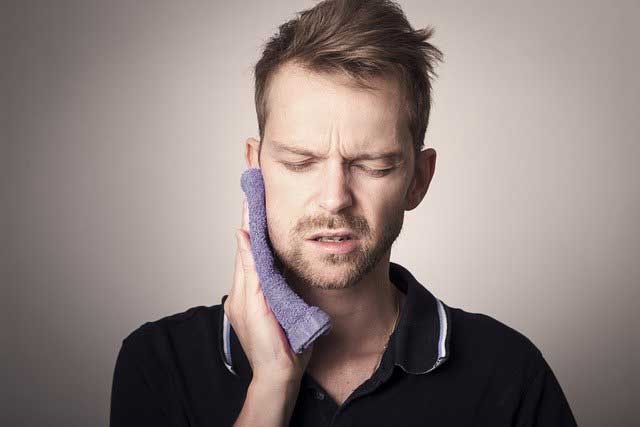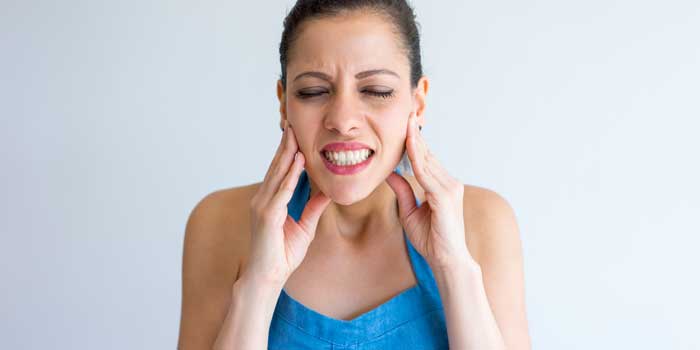Table of Contents
The Temporomandibular Joint connects the jaws to the skull. If this joint is hurt or injured, it might escalate to a local pain condition known as temporomandibular joint (TMJ) or temporomandibular disorder (TMD).
Wounded or swollen temporomandibular joints lead to discomfort with clicking, chewing, popping, and crackling of the jaw. Inflammation on the face sides, inflammation of the nerves, headache, including migraines, teeth grinding (bruxism), dysfunction of the eustachian tube(hearing problem).
Occasional dislocation of the temporomandibular joint are also experienced. A temporomandibular joint syndrome is sometimes referred to as a temporomandibular joint disorder. Listed below are 5 ways to help you treat Temporomandibular Joint Syndrome (TMJ)
1. Exercises
According to a report published in the Journal of Dental Research, doing TMJ exercises improves the range of mouth openings rather than just using a mouthguard only.
These exercises can alleviate TMJ symptoms and help the mobility of your jaw joints. There are frequency guidelines for certain movements. Ask your doctor or dentist for advice for jaw exercises.
 Here few jaw exercises one can try for jaw pain.
Here few jaw exercises one can try for jaw pain.
Relaxed jaw exercise
Gently rest your tongue on the roof of your mouth behind your upper teeth in the front. Enable your teeth to come apart while you are relaxing the muscles of your jaw.
Goldfish exercise
Keep your tongue on your mouth roof, put one finger on your TMJ, and yet another finger on your chin. Drop the lower jaw downward and backward.
Chin tuck
Push your chin directly down with your shoulders back and chest upwards, making a “double chin.” Stay put for 3 seconds. Repeat 10 times.
Resisted opening of the mouth
Position your thumb underneath your chin. Open your mouth slowly, push it softly against your chin for the opposition. Keep on for 3 to 6 seconds, then gently close your mouth.
Resisted closing of the mouth
Use the index finger and the thumb in one hand to squeeze the chin. Close your mouth when you softly apply pressure on your chin. This can help you improve the strength of the muscles that help you chew.
2. Medications
Over-the-counter pain medications such as acetaminophen and ibuprofen can help alleviate TMJ discomfort. Medicine will help in early phase of TMJ problem, Muscle relaxers can be prescribed for intolerable pain.
3. Reduced load on TMJ
By reducing load in tmj helps to recover inflammatory changes in joint disc and face muscles, Doctors may advice following:
- Mouthguards to reduce grinding of teeth and jaw clenching
- Mouthguards to help with your jaw realignment
- Ice, not more than 15 minutes/hour, not directly applied to the skin.
- Stress-relief strategies that effectively prevent habits that trigger discomfort in the jaw
- Acupuncture for relaxation of pain in the affected area
Extreme pain caused by impaired joints can need more invasive care, such as injections of corticosteroids into the TMJ. Surgery should be viewed as a last.
TMJ pain can also be treated with easy lifestyle adjustments. You can follow few recommendations like:
- Consume a soft diet to make the TMJ relax.
- Refrain from chewing gums
- Not bite your nails
- Stop chewing the lower lip
- Learn healthy postures
- Limit major jaw motions, such as yawning or singing.
4. Relieving Pain during dental care
It can be painful to follow simple oral hygiene if you have TMJ. This involves flossing, brushing your teeth, and getting a regular dental cleaning.
Follow these guidelines to minimize pain and help you get dental jaw pain relief:
- Using a power toothbrush or a soft-bristle toothbrush.
- If you are unable to open your mouth to floss, choose a water flosser or a rubber tip stimulator.
- Apply antiseptic mouth rinse to your routine dental care schedule.
- Tell the dental care staff if you experience pain after a dental procedure.
- After a dental treatment, apply ice or heat.
5. Bite Guards
You could use a bite guard (also known as a stabilization splint) to help protect you from clenching or grinding your teeth.
Bite guards are typically made from biocompatible acrylic material; they fit over your lower and upper teeth and prevent your teeth from touching each other.
There are many varieties of bite guards available — you may use soft or rigid bite guards, for example. Bite guards must only be temporarily used (your doctor or dentist will let you know for how long and how often you should wear them).
If the bite guard triggers the discomfort or continues to influence the way you bite, stop using it instantly and contact the doctor. Make an appointment with your doctor for the treatment of TMJ pain.
Conclusion
In certain cases, TMJ disorders disappear on their own. If your symptoms continue, TMJ exercises can help alleviate pain. TMJ exercises aren’t meant to be performed while you are in serious pain.
Start slowly when doing TMJ exercises. You can experience some discomfort at first, but it should be tolerable and eventually improve. Consult the doctor if the pain is not tolerable.
Author bio
Dr. Banupriya is a specialist in Implant Dentistry, MDS in Periodontology. An enthusiastic and experienced dentist, Her point of interest lies in Cosmetic Dentistry and Pain management. Apart from these, she had finished her fellowship in Aesthetic Medicine, in Germany


